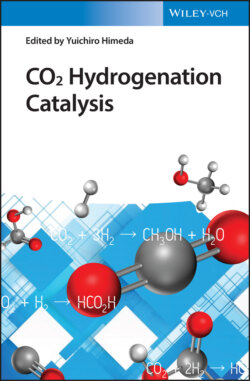Читать книгу CO2 Hydrogenation Catalysis - Группа авторов - Страница 14
1.3.1 Formic Acid/Formate
ОглавлениеFormic acid is the first carboxylic acid and is naturally occurring produced by ants, bees, and some plants. In 2016, the global production of formic acid was 1.02 Mton [10]. The general production process of formic acid involves the formal carbonylation of water in a two‐step synthesis via methyl formate. Formic acid and its salts (formate) are valuable chemical products used for silage and animal feed (27%), leather and tanning (22%), pharmaceuticals and food chemicals (14%), textile (9%), natural rubber (7%), and drilling fluids (4%) [11]. Recently, formic acid has been recognized as a promising liquid organic H2 carrier (LOHC) because of its low toxicity, low combustibility, stability, environmental friendliness, and 4.4 wt% (53 g l−1) H2 content [12–14]. In addition, compressed hydrogen gas can be supplied only by heating of formic acid using catalysts as a chemical compressor [15]. Therefore, advances in the efficient production of formic acid/formates may eventually lead to their large‐scale use as LOHCs (see Chapter 10).
